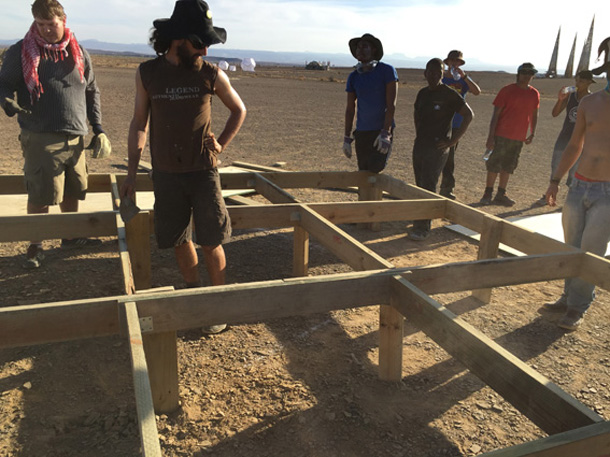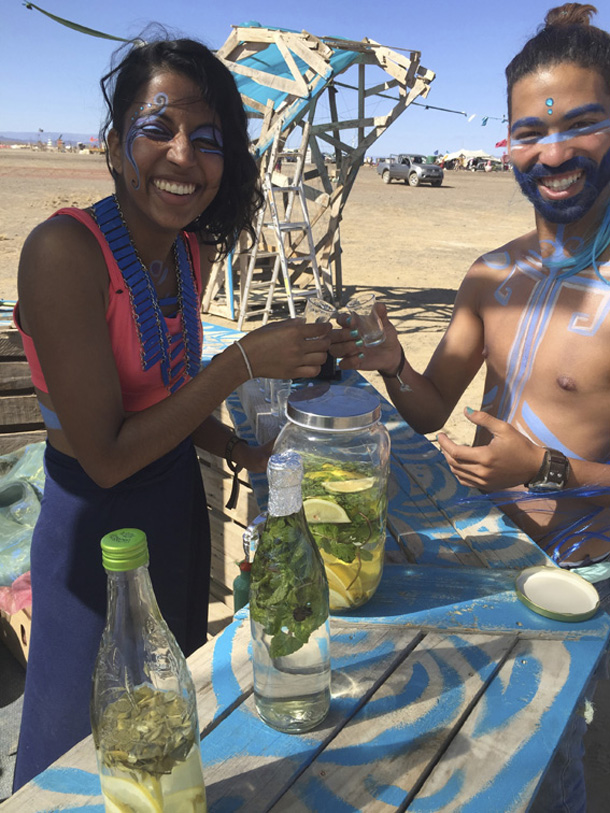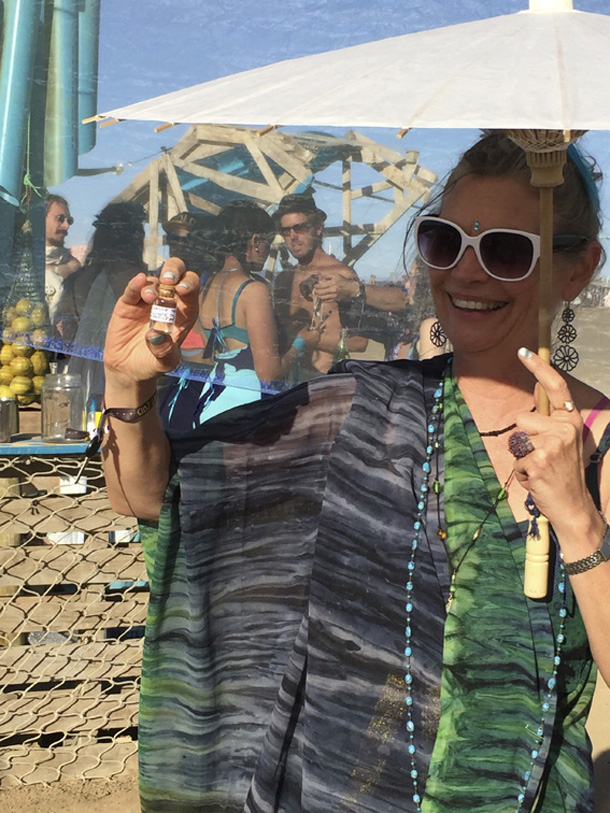BINNEKRING BLOG
Burning Fiscilla
(words: Andrea Broom, Design Project Imagineer, CPUT / images: Andrea Grant Broom)
A CPUT (Cape Peninsula University of Technology) project on Participatory Design for climate change manifested in the expressive art installation, Fiscilla the Tigerfish. Designed and made by fourth year (BTech) Industrial Design students, the wood and steel fish was first installed at the Participatory Design Conference in Windhoek, Namibia, in October 2014. Fiscilla, as she was affectionately known, was used as a mediating artefact to collect perspectives on climate change from farmers, fishermen and communities en route. After an epic and successful journey, the installation returned to Cape Town along with some very changed and engaged students.
On the long drive back to Cape Town, Fiscilla’s fate was intensely discussed by the 36 participants on board the bus, and it was decided that AfrikaBurn would be the perfect event for a ceremonial burn of our symbol of climate change. The issue of water as a stark reminder of our fragility on this planet had emerged from our interactions along the West Coast of Southern Africa. Stories of how changing temperatures and water availability as told by the local participants had been inscribed in the dry mud represented below the much-admired Fiscilla’s steel frame, and we knew we had to send these messages further afield.
AfrikaBurn was chosen as the event which could provide us the space of possibility needed for a second interpretation of what the Fish stood for. There, in the heat and the dust of the Tankwa Karoo was the perfect place to put Fiscilla as an incongruous reminder of water – that glittering, quenching and vital element, utterly necessary for human and environmental survival.
Serendipitously, an invitation had simultaneously been sent out to the CPUT Architectural and Interior design students on the ECP (extended curriculum) programme from AfrikaBurn, to build a performance stage.
This turn of events provided a very productive learning space for both groups of students. During the collaboration, the BTechs mentored the younger set, and many an embattled decision was made during the planning for the event. The intense design and workshopping proved highly successful on many levels. The interdisciplinary cooperation provided a huge challenge for not only the two different skill levels, but also became a facilitation challenge for the educators and project manager involved. Amazing opportunities constantly arose through the rippling series of interactions between the two groups as we clustered around the design of the stage and performance concepts.
After arriving and setting up camp at AfrikaBurn, the 60 + students negotiated shifts of hard toil, and after three days had produced an interesting space for Fiscilla’s rebirth and death. The blue oasis created comprised a stage on which Fiscilla could shine, which was to be shared with other fascinating performers. Three wave-like ‘chill spaces’ and a ‘water bar’ complete with wind chimes completed the scene. Gorgeously appointed ‘water nymphs’ and ‘waterkeepers’ gifted naturally flavoured ‘water shots’ to the many curious AfrikaBurners to make manifest the message of water, in a reportedly very powerful way.
Fiscilla became a point of interaction with the curious AfrikaBurn community, and ultimately ended her journey in a glorious burn on the Friday evening as the sun set on the Tankwa horizon. On reflection, and as was evident in the documentary made of her journey, those who encountered Fiscilla’s message reflected our current conflicted attitudes and possible negative trajectory toward climate change.
Once the ashes were collected, and camp packed up, the story of Fiscilla has continued through many a wide-eyed reflection. Living the event, for most of us, has proven unforgettable, and will live on in a communicative ecology planned to bridge into the project’s next phase, along with a serious look at what this kind of intervention can offer in terms of experiential learning and design. For those involved, Fiscilla the Tigerfish has exemplified the designerly ways in which we can create new knowledge and awareness in territories as yet unknown.









